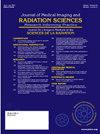For the busy clinical-imaging professional in an AI world: Gaining intuition about deep learning without math
IF 1.3
Q3 RADIOLOGY, NUCLEAR MEDICINE & MEDICAL IMAGING
Journal of Medical Imaging and Radiation Sciences
Pub Date : 2024-10-21
DOI:10.1016/j.jmir.2024.101762
引用次数: 0
Abstract
Medical diagnostics comprise recognizing patterns in images, tissue slides, and symptoms. Deep learning algorithms (DLs) are well suited to such tasks, but they are black boxes in various ways. To explain DL Computer-Aided Diagnostic (CAD) results and their accuracy to patients, to manage or drive the direction of future medical DLs, to make better decisions with CAD, etc., clinical professionals may benefit from hands-on, under-the-hood lessons about medical DL. For those who already have some high-level knowledge about DL, the next step is to gain a more-fundamental understanding of DLs, which may help illuminate inside the boxes. The objectives of this Continuing Medical Education (CME) article include:
- •Gain an intuitive understanding of DL
- •Learn example DL architectures for pattern recognition
- •Explore optimization of DLs and some factors that affect their accuracy using non-clinical images as input data
- •Gain insights from simulations to probe DL behavior and options to optimize DLs
- •Review lessons learned from the simulations
为人工智能世界中繁忙的临床成像专业人士而设:不用数学就能获得深度学习的直觉。
医学诊断包括识别图像、组织切片和症状中的模式。深度学习算法(DL)非常适合此类任务,但它们在各方面都是黑盒子。为了向患者解释 DL 计算机辅助诊断(CAD)结果及其准确性,管理或推动未来医学 DL 的发展方向,利用 CAD 做出更好的决策等,临床专业人员可能会受益于有关医学 DL 的实践和底层课程。对于那些已经掌握了一些高级 DL 知识的人来说,下一步就是要对 DL 有一个更基础的了解,这可能会有助于照亮方框内部。这篇继续医学教育(CME)文章的目的包括:通过与医学相关的类比和亲身体验快速模拟,观察深度学习的实际操作,就像临床医生接受其他任务的培训一样,可以更好地理解深度学习。我们开发了易于实施的演示和模拟练习。我们将乳腺癌、恶性肿瘤和癌症分期作为诊断应用的示例,并以此作为练习的框架。模拟揭示了 DL 输出准确性与数据数量和性质之间的微妙关系。模拟结果为临床提供了经验教训和启示。虽然我们的重点是用于诊断的 DL,但它们与 DL CME 相似。.
本文章由计算机程序翻译,如有差异,请以英文原文为准。
求助全文
约1分钟内获得全文
求助全文
来源期刊

Journal of Medical Imaging and Radiation Sciences
RADIOLOGY, NUCLEAR MEDICINE & MEDICAL IMAGING-
CiteScore
2.30
自引率
11.10%
发文量
231
审稿时长
53 days
期刊介绍:
Journal of Medical Imaging and Radiation Sciences is the official peer-reviewed journal of the Canadian Association of Medical Radiation Technologists. This journal is published four times a year and is circulated to approximately 11,000 medical radiation technologists, libraries and radiology departments throughout Canada, the United States and overseas. The Journal publishes articles on recent research, new technology and techniques, professional practices, technologists viewpoints as well as relevant book reviews.
 求助内容:
求助内容: 应助结果提醒方式:
应助结果提醒方式:


